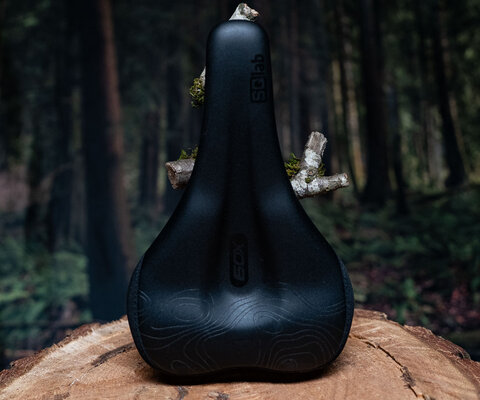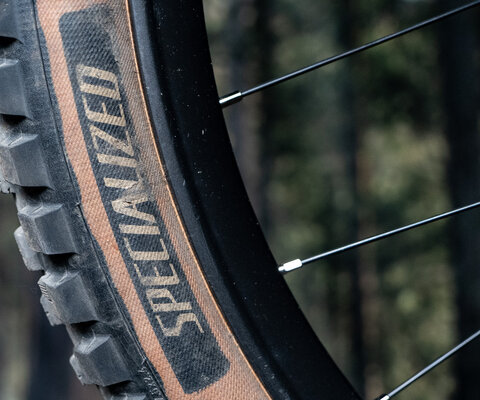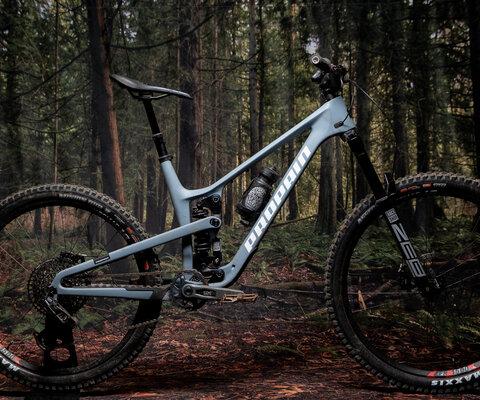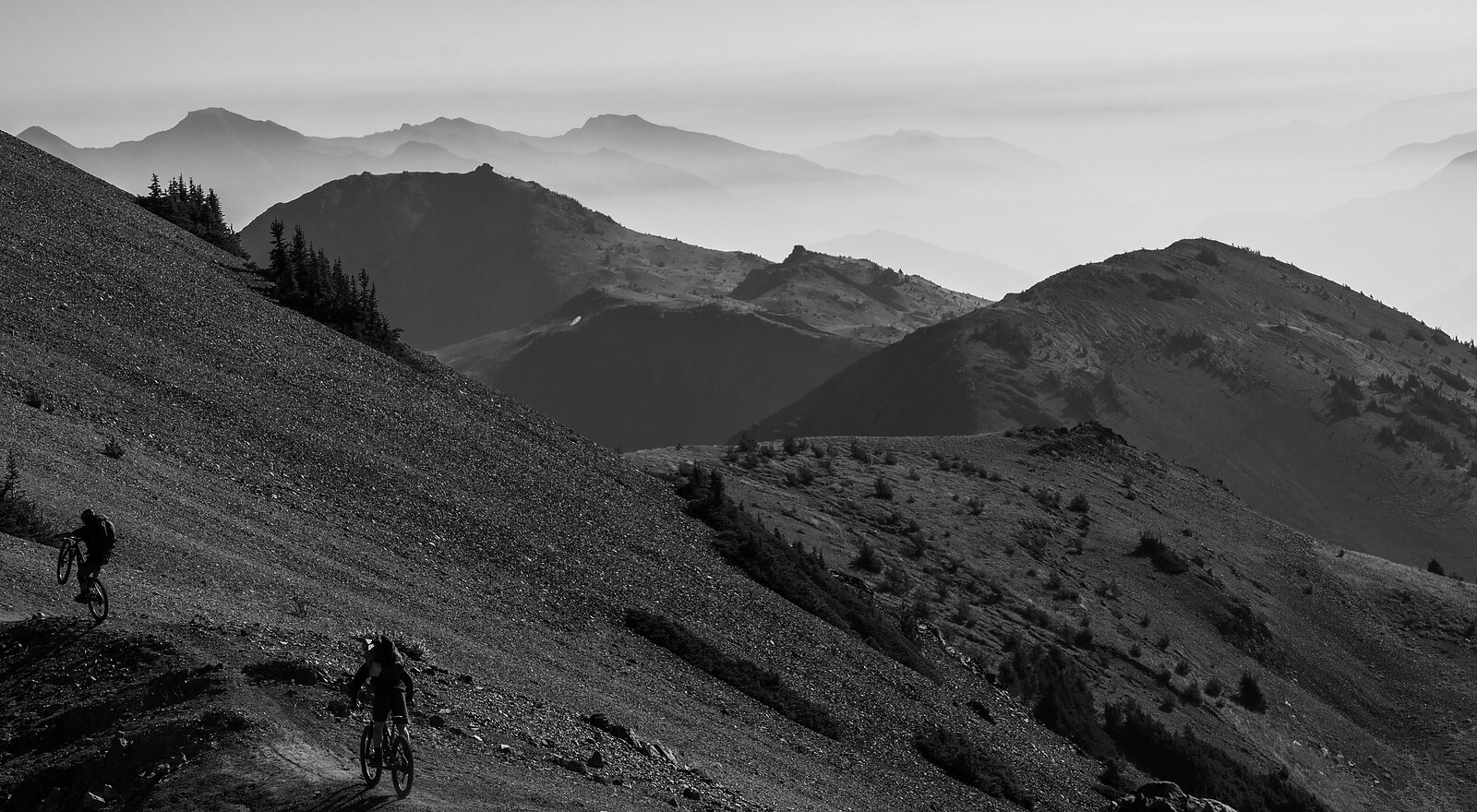
Responsible Recreation Striking a Balance in the Chilcotins Transformed by Trails
Words by Will Cadham
The South Chilcotin Mountains (SCM) and Big Creek Provincial Park (BCP) are located within the Chilcotin mountain range, named after the region’s original inhabitants, the Tsilhqot’in nation.
Located 110 miles north of Vancouver, the area divides the dramatic mountaintops of the Coast Mountains, from the rolling grasslands of the Chilcotin Plateau, with its vibrantly colored peaks.
The two parks encompass around 125,000 hectares of protected wilderness containing incredible ecological diversity. Known to its original inhabitants as the “Skumakun,” or “Land of Plenty,” this region houses healthy populations of fish, grizzly bears, moose, bighorn sheep, grey wolves and cougars. Grizzly bear and moose are so abundant that they now contribute to surrounding populations.
Beyond the conservation value, the Chilcotin are a special place for recreationalists seeking a wilderness experience. The parks are home to one of North America’s largest contiguous networks of subalpine and alpine singletrack, forged by First Nations and then gold prospectors generations ago. This incredible trail infrastructure allows visitors to participate in a variety of activities, including hiking, horseback riding and mountain biking, while also experiencing the beauty and solitude of a functioning wilderness ecosystem. Thanks to thoughtful consideration from park users, and management guidelines set by B.C. Parks, the area shows limited evidence of humans to this day, despite decades of recreational activity.
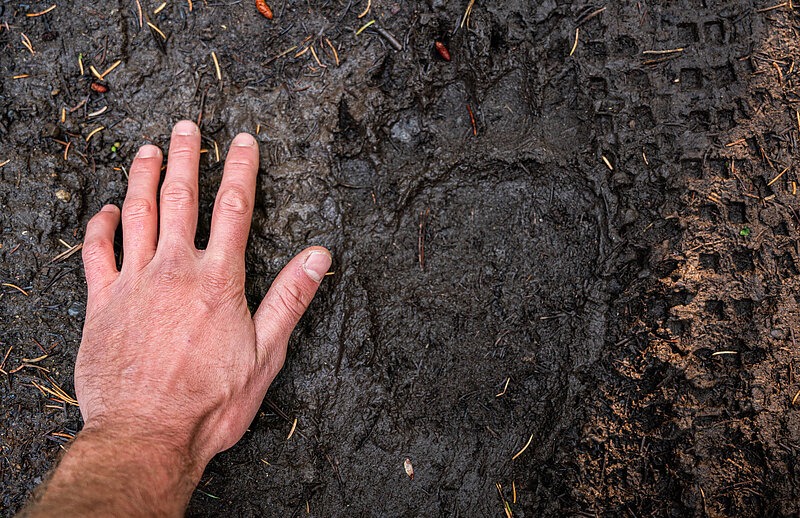
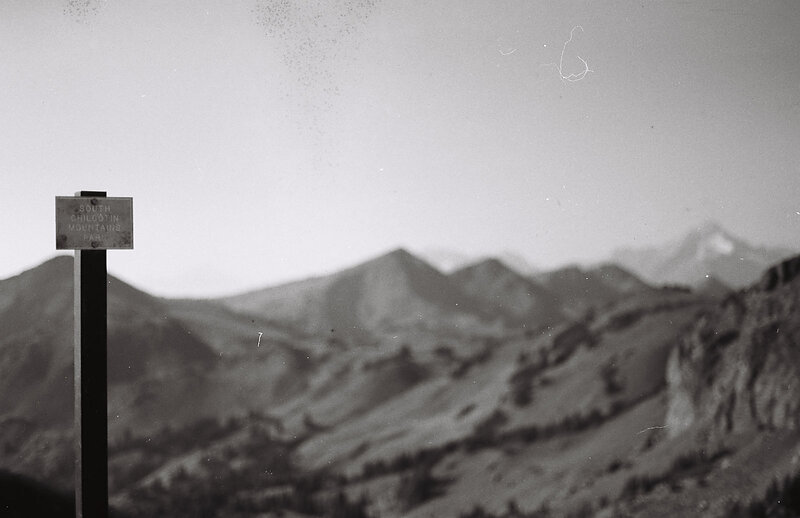
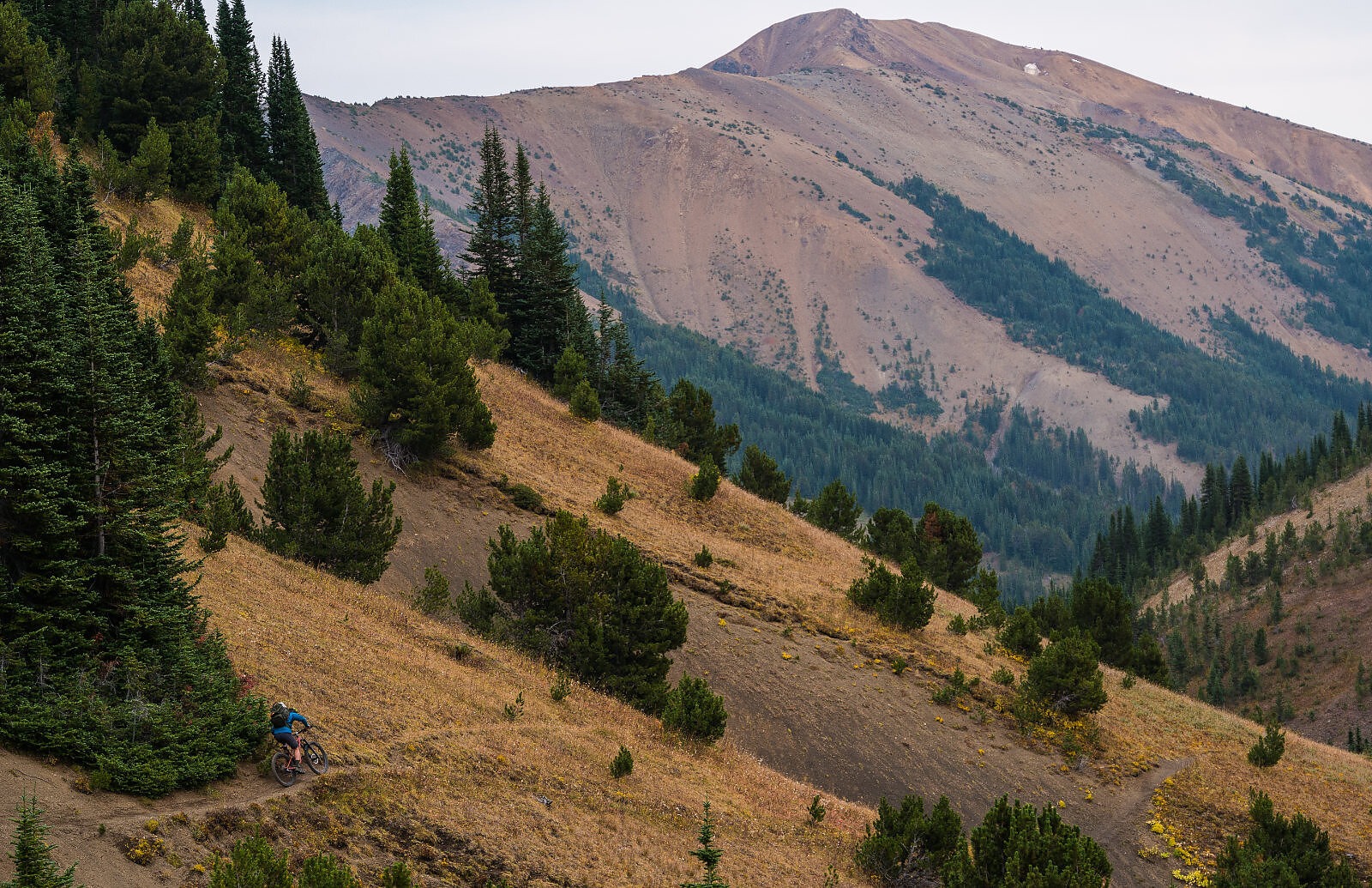
The outstanding conservation and recreation resources of the Chilcotin region has been understood and documented by settlers for nearly a century. The early 1930s saw a gold mining boom in nearby Bralorne and aptly named Gold Bridge, which prompted much of the initial interest in preserving the area. The first big conservation movement happened in 1937, when the Vancouver Natural History Society advocated for the establishment of a large wilderness area covering much of what’s now included in SCM and BCP. Charlie Cunningham, a wildlife filmmaker at the time, was a driving force in the original movement for preservation, and the original wilderness proposal even bore his name. The initiative largely targeted protection from mining and logging, and thus garnered the support of the guide outfitters in the area.
The BCP and SCM fall within the traditional territories of the St’at’imc, Tsilhqot'in and Secwepemc Nations. Their people have been caretakers of the land for thousands of years, and they lived in harmony with their natural surroundings until they were forcefully removed from their territory and sent to reservations and residential schools. Graveyard Valley, located in the BCP, holds particularly sacred value for both the Tsilhqot’in and St’at’imc nations, who for generations battled over this land that lies between their two territories. The final battle was believed to have taken place in 1898. According to oral history, the rivalry between the two tribes ended during a particularly harsh winter of 1900, when the Tsilhqot’in faced a terrible starvation. Despite the turbulent history between their tribes, a St’at’imc prospector known as Hunter Jack brought the Tsilhqot’in food throughout the winter, which eased tensions between the tribes. It wasn’t until 2003 that a formal peace agreement was made and leaders from both sides met to erect cairns to commemorate the graves of the fallen.
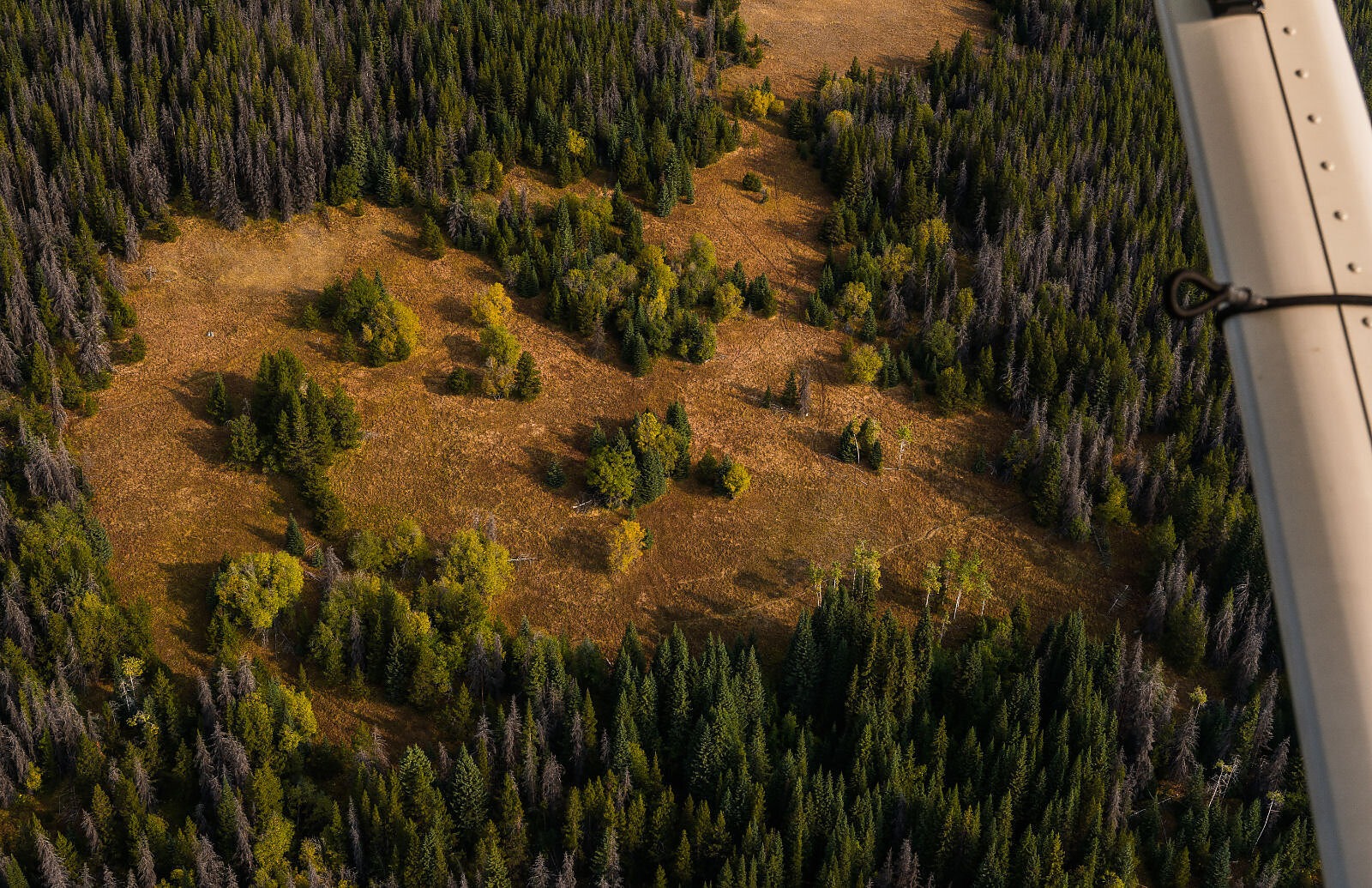
Despite longstanding interest in preserving some of the Chilcotin Range from resource extraction, it has had a contentious history. It was nearly 60 years after Cunningham’s initial proposal that part of the area was protected by a provincial park. Big Creek Provincial Park was founded in 1994 as a Class A park, and its area has been slowly expanded since. The South Chilcotin Mountains Provincial Park that we know today has had several iterations of protection that have waxed and waned over the years. On June 30, 2010, approximately 80 percent of the former Spruce Lake Protected Area was transformed into the South Chilcotin Mountains Provincial Park, and three areas were withheld from park status to provide opportunities for mining and tourism.
“Class A parks are Crown lands dedicated to the preservation of their natural environments for the inspiration, use and enjoyment of the public. Development in Class A parks is limited to that which is necessary to maintain the park’s recreational values. Some tenures and licences that existed at the time a park was established (e.g., grazing, hay cutting) may be allowed to continue in certain Class A parks, but commercial resource extraction or development activities are not permitted (i.e., logging, mining or hydroelectric development)."—BC Parks
Mountain bikers have been exploring the stunning subalpine and alpine singletrack of the South Chilcotin Mountains since the late 80s. Grant Lamonte, WORCA Director of Advocacy, fondly recalls his first mountain bike trip in the area in 1989 with his friend Dave Beattie. On a beautiful sunny day in August, the pair rode up Gun Creek to Spruce Lake, swam in the lake to cool off, and rode back the way they came. Grant recounts seeing several moose and bears, feeling intoxicated by the vast wilderness and excited to return again. Having explored the area with his father as a child, on work trips to the Bralorne Gold Mine, Lamonte knew there was a vast network of horse, mining and hunting trails winding through the mountains. He returned the following year for a stag party for his friend Les Claire, and the gang had Mike Quinn from Whistler Air fly their gear, including four kegs, into Spruce Lake. Fifteen guys rode out Gun Creek, camped at the lake and then rode High trail up to Windy Pass and out Lick Creek. This may have been the first-ever, float-plane-assisted mountain bike ride in the Chilcotin region.
Mountain biking in the Chilcotins experienced a popularity boom in the late ‘90s and early 2000s, and with this growth came mounting hostility between mountain bikers and some other user groups. The perception from hikers and horseback riders was that the trails were being found, overused and abused by mountain bikers. Trailside altercations with horseback riders and hikers became confrontational, at times bordering on conflict. A professional rider and film crew helped to spur the unfavorable sentiment toward mountain bikers when they came into the area and shot some riding down the big mountain scree slopes. It was something new, different and unsightly for those more traditional users. As the numbers of mountain bike users in the region grew, the statistical opportunity for bad actors also increased. There are a few stories that can be found in online forums or article comments of isolated incidents in which riders behaved poorly, rode off trail, or disrespected other trail users or wildlife. This bad behavior by a few reflected poorly on all mountain bikers accessing the Chilcotin. Lamonte and others note that the relationship between user groups in the park has significantly improved since that period of turmoil.
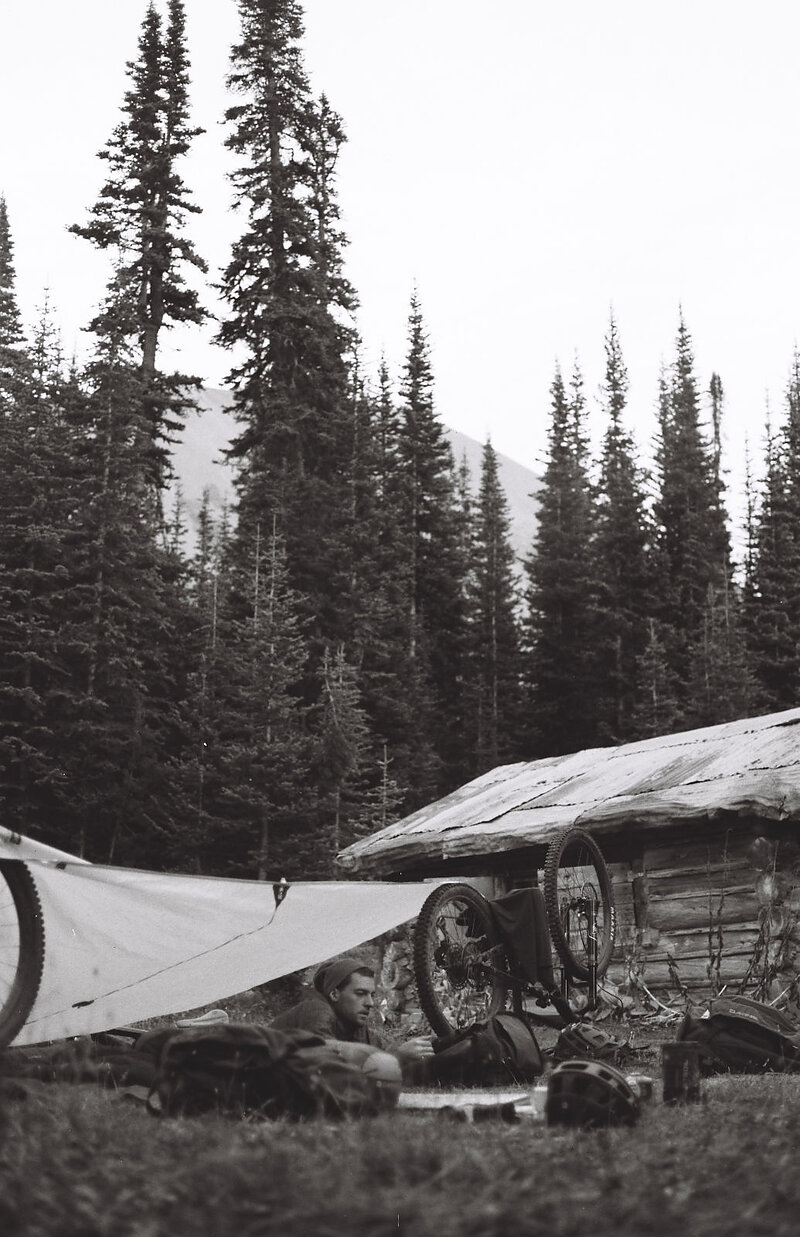


By 2010, conflict between user groups had resurged, but this time it was a bureaucratic battle. When the Spruce Lake Protected Wilderness area was introduced in 2001, all outdoor recreationalists could still freely travel through the area, the same way they can on the rest of B.C.’s Crown land. But after becoming a B.C. Park in 2010, the governing body, B.C. Parks, solicited comments from the public and operators on a plan for Big Creek and the SCM Provincial Parks Chilcotins. After this consultation, a draft management plan was proposed in 2014 that would diverge from the current limit outdoor recreationalist, with the majority of restrictions disproportionally targeting mountain bikers over other users. Lee Lau, an intellectual property lawyer and outspoken mountain bike advocate, published a thorough analysis of the The Draft Management Plan back in May of 2014. The full report can be viewed HERE .
In 2011, as part of the draft process, B.C. Parks conducted a survey and found that mountain bikers had grown to become the predominant user group in the Chilcotins, commanding 55 percent, while hikers made up 22 percent and horseback riding merely 4 percent. Some respondents did report taking part in more than one activity, especially mountain bikers also participating in hiking. Although the number of cyclists had grown in the last two decades, there was little concrete evidence to suggest overuse of the park beyond its carrying capacity. It was confounding to many that despite their own findings, B.C. Parks’ draft management plan was seeking to inordinately restrict the behavior of the Park’s major user group.
The draft period created uncertainty for the future of mountain biking in the Chilcotins. Cyclists faced pending restrictions from BC Parks that would have radically altered the way we access and use the Spruce Lake area and the adjacent Big Creek Park. Proposed measures included restricting the timing and location of bike activity (i.e., only allowing riders access between 8 a.m. and 4 p.m., limiting the use to three days a week and curbing float plane access into the park. It was these curtailments, combined with poor rationalization by Parks, that sparked action from the mountain bike community. Dale Douglas, owner and operator of Tyax Adventures, a commercial tourism operator whose business relies on mountain bike access to the park, was so enraged by the drafting process he submitted a petition to the minister to have the plan re-examined. It’s quite likely that without the poignant analysis provided by Lau, the petition from Douglas and the resulting outcry from the mountain bike community, that our access to the park would have been different than it is today.

With the publishing of the original Management Plan in 2014, and the most recent update in 2019 the continued inclusion of unrestricted access for mountain bikes bodes well for future use of this stunning region and expansive trail network. However, we as mountain bikers must remember our access to these trails is a privilege, not a right. And it is imperative that we continue to be respectful to other users and wildlife, and to be sure to only go into the backcountry with proper knowledge and preparedness.
Lamonte and others acknowledge that it may have been the tremendous volunteer trail maintenance efforts performed by mountain bikers that has helped our community improve their relationships with hikers and horseback riders. There has long been a dedicated tight-knit group who have taken it upon themselves to actively maintain trails in and around the parks. A special mention to Douglas, Troy and the Tyax Crew, Geoff Playfair, Pat Mulroney, Lau, and many WORCA members who have all been instrumental over the years in keeping the trails clear of fallen trees, maintaining sight lines and generally improving the backcountry riding experience. Mountain bikers are not the only ones doing trail work, but we have been making significant contributions to the maintenance efforts in the Parks.
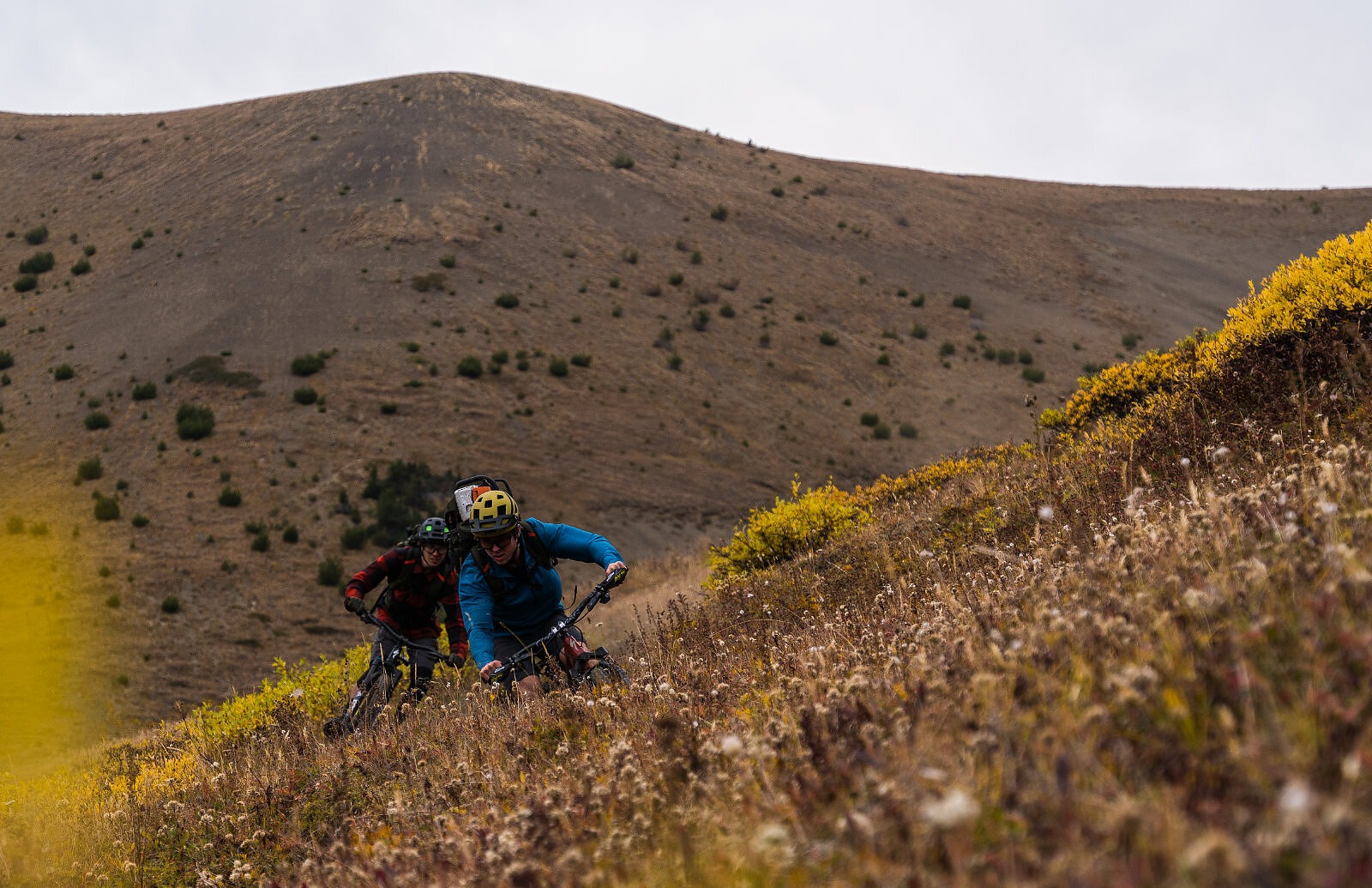
The number of mountain bikers venturing into the Chilcotins has increased steadily over the past several years, according to multiple sources, including Dale Douglas of Tyax Adventures. While the Trailforks app strongly suggests a steady increase in user numbers, Douglas, along with BC Parks officials, claims that there are now far more mountain bikers annually than even the app suggests. They estimate that now around 2,000 mountain bikers access the park each year, with roughly half of those assisted in some way by Tyax Adventures.
What we need now, as mountain bike users continue to grow, is further energy towards maintenance, perhaps from riders actively using the trails. Tyax Adventures, who have been doing trail work for their 22 years of operation are leading by example. Their staff dedicated over nine hundred hours of trail maintenance to the network in 2020, when you include flights, fuel, tools, staff wages, lodging and food, it is a $30K investment. Douglas says, despite the work, they are still losing trails every year to mother nature, and Tyax alone doesn't have the time or the resources to keep up with the work.
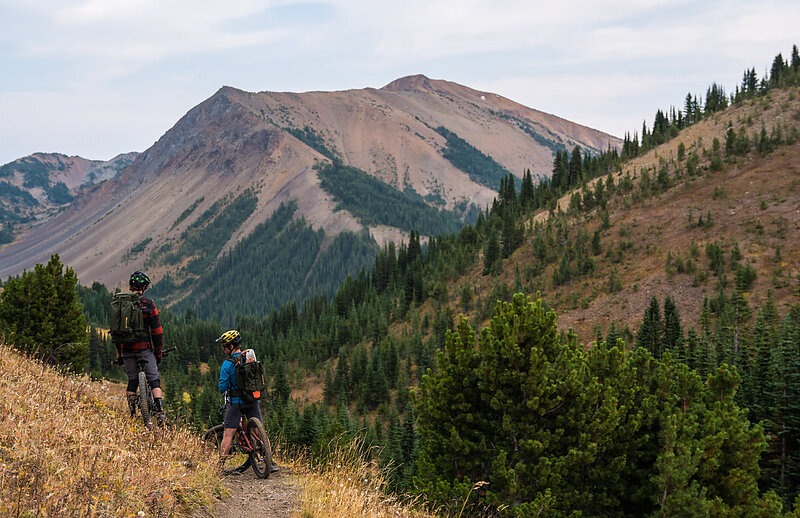
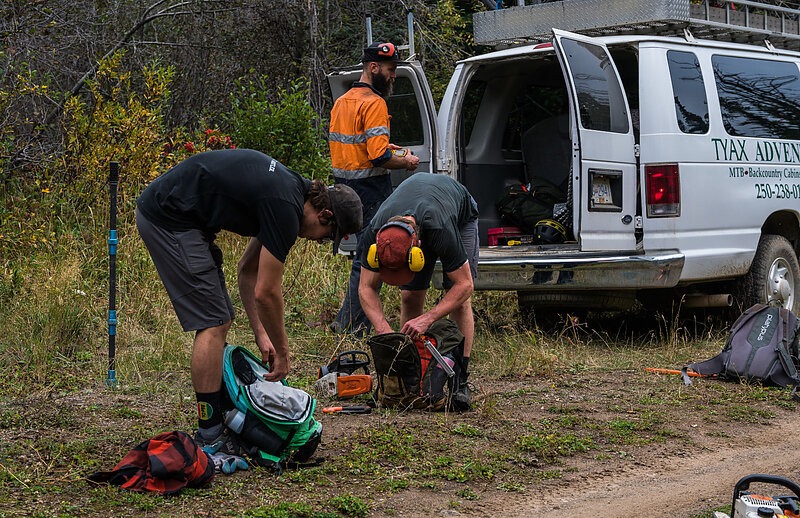
One would hope that the land manager, BC Parks, would be taking more responsibility for some of the necessary trail work. However, Parks are notoriously underfunded and spend the least per hectare of park of all the provinces in Canada at $2.80/ha - compared to Alberta’s $30/ha. I did reach out to BC Parks for a comment but did not hear back from them before submission. Douglas has noticed their increased presence over the last two years, and mentioned Parks have made improvements to signage and helped with trail clearing. They are also in the process of constructing a ranger’s cabin on Spruce lake to facilitate a more permanent existence in the future. Douglas believes between Tyax and Parks, their combined efforts were noticed by all those who rode this season adding, “I did a three day loop this season and it was the best shape it’s ever been in!” That’s a serious testament coming from a man who has been riding in the area for nearly 30 years.
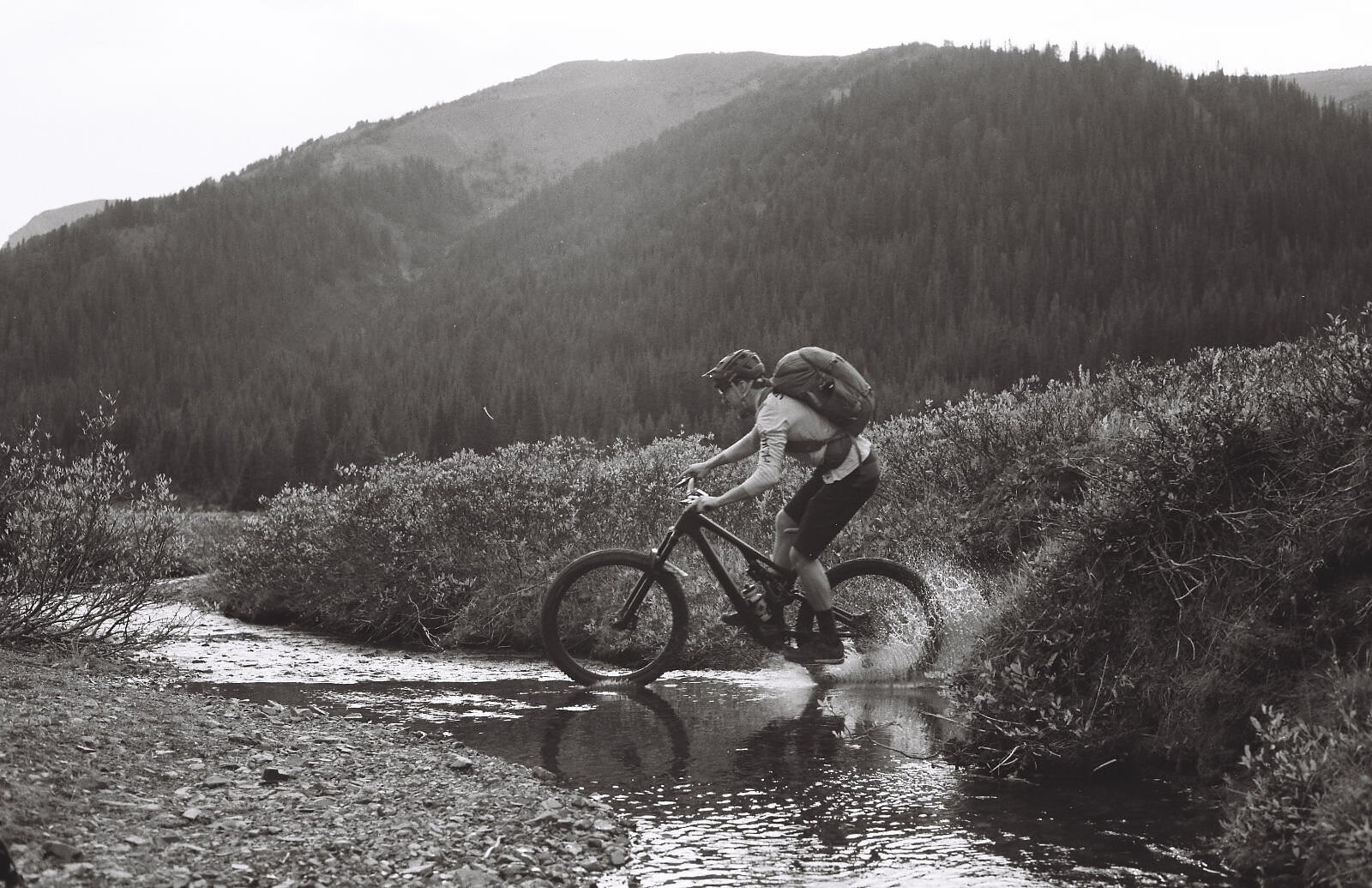
If you want to get your hands dirty, here’s how to do it properly. Members of the public are not allowed to just head into a park and do trail maintenance, instead interested parties must submit and receive approval for trail work. Please contact a BC Parks Representative for further information.
For millennia, the St’at’imc, Tsilhqot'in and Secwepemc Nations have been caretakers of the lands containing the current South Chilcotin Mountains and Big Creek Provincial Parks. The feeling of solitude and wonder one receives when traveling through this pristine environment has been cherished by humans for generations. That same experience, nearly unchanged, is available to mountain bikers today. This is an enormous asset to our very fortunate community, an asset we need to enjoy responsibly and care for. Now it’s our turn to take care of Skumakun for future generations of riders to enjoy.
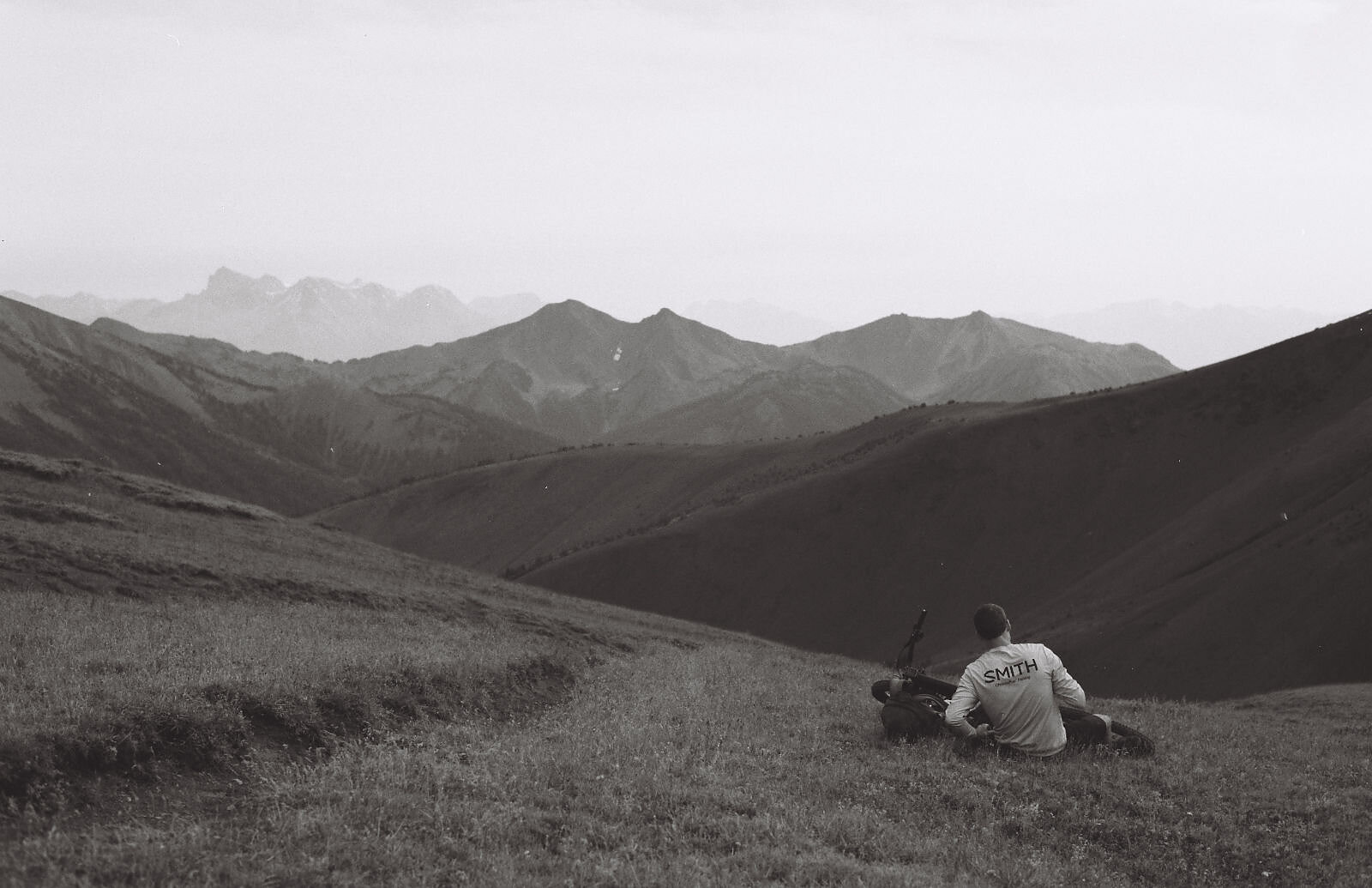
Some excitement and energy is building around the Bridge River Valley Community Association, a group of volunteers who are looking to strengthen the voice of trail users in the region surrounding BCP and SCM and will hopefully grow to become a driving force behind future trail work. At the request of Douglas from Tyax, we have decided the money raised for this portion of the fundraiser will be forwarded along to the Bridge River Valley Community Association. Please check back in a few weeks for more information on how to donate.
Mark and I want to send a special thank you to all our sponsors for their continued support through these wild and uncertain times. The trail work we completed this year, and the stories you will read in this series wouldn’t have been possible without their trust and commitment to the Free Radicals and the common goals we are working towards. Thank you Fanie Kok, Steve Saletnik and Allan Cooke of Specialized, Jon Raymer at SMITH, Tyler Weady at Fat Tire, Mal Burd and Sarah Rawley of RockShox, Julian Hine at Chromag, Elliott Milner and Jimmy Hopper at Patagonia, Dan Seguin and Callum Rostron at RideWrap, Brandon Watts, Brice Minnigh, Chris Grundberg and the whole crew at Freehub, and last but not least, to Martin Littlejohn at Mountain Biking BC. Thank you all for helping to keep the dream alive!
